If there were a dictionary or encyclopedia entry for “unconventional television shows,’ the up-to-date illustration would have to be a frame grab from Louie, comedian Louis CK’s series, which recently wrapped up its fourth season on FX. The Peabody Award winner is a comedy-drama, kinda-sorta, but it’s more of an ongoing mutation than a hybrid, a series that can change from week to week like a shook-up kaleidoscope. In a medium built on and sustained by predictable formats, Louie is a shapeshifter. It never conforms to episodic norms or expectations. Only its irascible, self-lacerating star remains the same every week, and even he is a work in progress.
But if Louie is unlike any TV series, ever, that’s not to say it’s the first series to toss one or more TV conventions to the winds, or to expand the boundaries. It has precedents in daring, though few of them were successful in the ratings, and some of them were deeply flawed experiments.
Here, in chronological order, are some of the most unorthodox series in TV history.
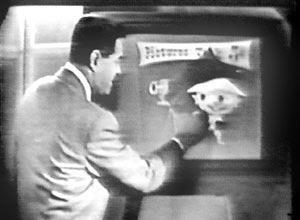 Winky Dink and You (1953-57, CBS) – TV’s perennial disclaimer – “Don’t try this at home!” – did not apply to this innovative animated show for kids. Home participation was the point. With a clear plastic cover for the TV screen and special crayons, young viewers could connect dots and draw lines to help complete adventures involving tousled-haired Winky and his dog, Woofer, and to decode secret messages. For its time, it was cooler than Kool Aid. None other than Bill Gates has called it “the first interactive TV program.” (Author’s note: If you couldn’t afford a Winky Dink kit, a sheet of waxed paper and a couple of Crayolas would suffice.)
Winky Dink and You (1953-57, CBS) – TV’s perennial disclaimer – “Don’t try this at home!” – did not apply to this innovative animated show for kids. Home participation was the point. With a clear plastic cover for the TV screen and special crayons, young viewers could connect dots and draw lines to help complete adventures involving tousled-haired Winky and his dog, Woofer, and to decode secret messages. For its time, it was cooler than Kool Aid. None other than Bill Gates has called it “the first interactive TV program.” (Author’s note: If you couldn’t afford a Winky Dink kit, a sheet of waxed paper and a couple of Crayolas would suffice.)
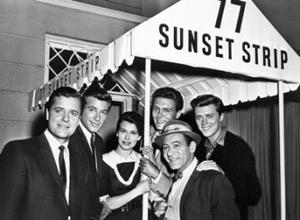 77 Sunset Strip (1958-74, ABC) – It had the snazziest, jazziest theme song of its day and, at its best, a sort of beat-poet rhythm to its dialogue, but the Warner Bros. detective melodrama is on this list only for a particular episode, first shown in 1960. Known now as “The Silent Caper,” it was just that, an hour of pure, old-school cinema. It followed private eye Jeff Spencer’s efforts to save a kidnapped woman, and it had not a word of dialogue until the closing frame. Series creator Roy Huggins’ credits also included Maverick, The Fugitive and The Rockford Files, but “Caper” was one of his proudest achievements, not just because it was creative and different but because he tricked ABC into airing it. He knew the network would object so he pretended to have production problems and turned it in so close to airtime that ABC couldn’t reject it.
77 Sunset Strip (1958-74, ABC) – It had the snazziest, jazziest theme song of its day and, at its best, a sort of beat-poet rhythm to its dialogue, but the Warner Bros. detective melodrama is on this list only for a particular episode, first shown in 1960. Known now as “The Silent Caper,” it was just that, an hour of pure, old-school cinema. It followed private eye Jeff Spencer’s efforts to save a kidnapped woman, and it had not a word of dialogue until the closing frame. Series creator Roy Huggins’ credits also included Maverick, The Fugitive and The Rockford Files, but “Caper” was one of his proudest achievements, not just because it was creative and different but because he tricked ABC into airing it. He knew the network would object so he pretended to have production problems and turned it in so close to airtime that ABC couldn’t reject it.
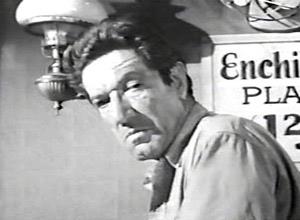 The Richard Boone Show (1963-64, NBC) – Coming off the back-to-back successes of Medic and Have Gun, Will Travel, Boone used his clout to get NBC to take on his pet project, a repertory theater company of the air. He recruited a dozen splendid character actors as his costars, among them Robert Blake, Bethel Leslie, Harry Morgan and Jeanette Nolan. Not only did it offer a completely different story each week, sometimes dramatic, sometimes lighthearted, but it featured the same players in completely different roles. Boone’s experiment, alas, got whacked by Petticoat Junction. NBC cancelled the show after its one guaranteed season because of low ratings.
The Richard Boone Show (1963-64, NBC) – Coming off the back-to-back successes of Medic and Have Gun, Will Travel, Boone used his clout to get NBC to take on his pet project, a repertory theater company of the air. He recruited a dozen splendid character actors as his costars, among them Robert Blake, Bethel Leslie, Harry Morgan and Jeanette Nolan. Not only did it offer a completely different story each week, sometimes dramatic, sometimes lighthearted, but it featured the same players in completely different roles. Boone’s experiment, alas, got whacked by Petticoat Junction. NBC cancelled the show after its one guaranteed season because of low ratings.
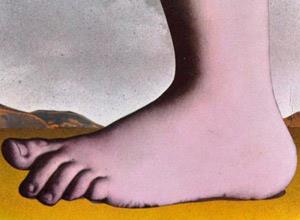 Monty Python’s Flying Circus (1969-74, syndicated) – Forty years after its BBC run ended, Monty Python is still something completely different. While there was some precedent for its comic anarchy in the Marx Brothers’ films and The Goon Show, a 1950s surrealist comedy series that the Python troupers grew up on, it also bore the influence of Dadaism and the rabbit-hole illogic of Lewis Carroll’s wonderland explorations. In the Python worldview, everything and anything was a potential target for satire, absurdity was exalted, silliness was revered, and fate hovered over humanity like a giant, crushing foot. Compared to Monty Python, most sketch comedy shows are no more than Spam, Spam and Spam.
Monty Python’s Flying Circus (1969-74, syndicated) – Forty years after its BBC run ended, Monty Python is still something completely different. While there was some precedent for its comic anarchy in the Marx Brothers’ films and The Goon Show, a 1950s surrealist comedy series that the Python troupers grew up on, it also bore the influence of Dadaism and the rabbit-hole illogic of Lewis Carroll’s wonderland explorations. In the Python worldview, everything and anything was a potential target for satire, absurdity was exalted, silliness was revered, and fate hovered over humanity like a giant, crushing foot. Compared to Monty Python, most sketch comedy shows are no more than Spam, Spam and Spam.
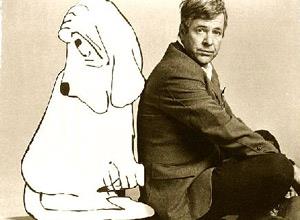
My World and Welcome to It (1969-70, NBC) – Inspired by the satirical writings and New Yorker cartoons of James Thurber, My World was a distinctive departure from the sitcoms of its day not only because of its curmudgeonly, philosophical protagonist, a cartoonist, but because it animated his drawings and blended them like daydreams with the live-action scenes.
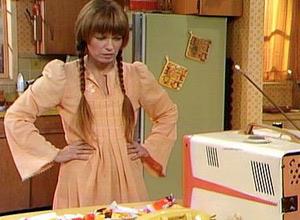 Mary Hartman, Mary Hartman (1976-77, syndicated) – A parody of daytime soaps such as As the World Turns, it moved, by design, as slowly as the waxy yellow build-up on its heroine’s kitchen floor. Like the sedated dialogue, the deliberate pace was a big part of the joke. What made it radical was its incorporation of not only the era’s hot-button social issues – homosexuality, feminism, child abuse – into the soap-opera format but also of plot developments out of News of the Weird, including an over-medicated coach who drowned face down in a bowl of chicken soup.
Mary Hartman, Mary Hartman (1976-77, syndicated) – A parody of daytime soaps such as As the World Turns, it moved, by design, as slowly as the waxy yellow build-up on its heroine’s kitchen floor. Like the sedated dialogue, the deliberate pace was a big part of the joke. What made it radical was its incorporation of not only the era’s hot-button social issues – homosexuality, feminism, child abuse – into the soap-opera format but also of plot developments out of News of the Weird, including an over-medicated coach who drowned face down in a bowl of chicken soup.
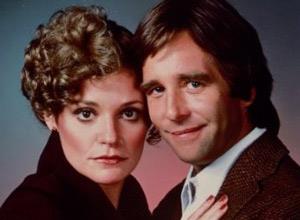 United States (1980, NBC) – Promising “to do for marriage what M*A*S*H did for war,” this very short-lived “comedy-drama” by Larry Gelbart had more in common with the frank explorations of wedlock of John Cassavettes – or Ingmar Bergman – than sitcoms like The Dick Van Dyke Show. Beau Bridges and Helen Shaver played a suburban Los Angeles couple struggling to keep their upwardly mobile union together. There was no laugh track, no background music and, alas, not nearly enough viewers to keep it afloat in the three-network, mass-audience era.
United States (1980, NBC) – Promising “to do for marriage what M*A*S*H did for war,” this very short-lived “comedy-drama” by Larry Gelbart had more in common with the frank explorations of wedlock of John Cassavettes – or Ingmar Bergman – than sitcoms like The Dick Van Dyke Show. Beau Bridges and Helen Shaver played a suburban Los Angeles couple struggling to keep their upwardly mobile union together. There was no laugh track, no background music and, alas, not nearly enough viewers to keep it afloat in the three-network, mass-audience era.
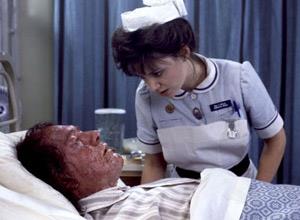 The Singing Detective (1986, public TV) – Dennis Potter’s The Singing Detective is a stunning demonstration of television’s potential that, alas, remains largely unexplored. For all the praise heaped on “novelistic” series such as The Sopranos and Breaking Bad, they’re literature more on the level of Scott Turow or John Grisham. The Singing Detective is more worthy of Faulkner or Joyce, a dense, dizzyingly creative work in which a hospitalized mystery writer’s bedridden reality, childhood memories and film noir hallucinations, complete with song-and-dance interludes, mix, mingle and blur into a unique viewing experience.
The Singing Detective (1986, public TV) – Dennis Potter’s The Singing Detective is a stunning demonstration of television’s potential that, alas, remains largely unexplored. For all the praise heaped on “novelistic” series such as The Sopranos and Breaking Bad, they’re literature more on the level of Scott Turow or John Grisham. The Singing Detective is more worthy of Faulkner or Joyce, a dense, dizzyingly creative work in which a hospitalized mystery writer’s bedridden reality, childhood memories and film noir hallucinations, complete with song-and-dance interludes, mix, mingle and blur into a unique viewing experience.
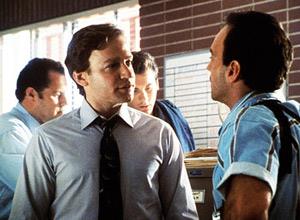 Cop Rock (1990, ABC) – Like a lot of the series on this list, this “cop-eretta” was the work of a highly successful producer who’d been given creative carte blanche to keep him at the network, in this case ABC. Steven Bochco (Hill Street Blues, NYPD Blue, L.A. Law) also produced a short-lived baseball drama, Bay City Blues, but Cop Rock, in which police officers, perps, judges and jurors sang like Pagliacci and Carmen, is the one that lives in, well, if not infamy, certainly ridicule. Some cringe-inducing lyrics notwithstanding, it wasn’t as awful as its reputation, and if ambition and degree of difficulty count for anything, it’s a milestone.
Cop Rock (1990, ABC) – Like a lot of the series on this list, this “cop-eretta” was the work of a highly successful producer who’d been given creative carte blanche to keep him at the network, in this case ABC. Steven Bochco (Hill Street Blues, NYPD Blue, L.A. Law) also produced a short-lived baseball drama, Bay City Blues, but Cop Rock, in which police officers, perps, judges and jurors sang like Pagliacci and Carmen, is the one that lives in, well, if not infamy, certainly ridicule. Some cringe-inducing lyrics notwithstanding, it wasn’t as awful as its reputation, and if ambition and degree of difficulty count for anything, it’s a milestone.
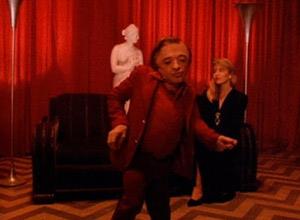 Twin Peaks (1990-91, ABC) – Part whodunit, part what-is-it, this groundbreaking, confounding serial was set in fictional Twin Peaks, Washington, a logging town teaming with the sort of eccentrics typically found in Southern Gothic novels, among them a lady with a pet log, a dancing dwarf and a sheriff named Harry S. Truman. But what really set Twin Peaks apart from any dramatic series before it was its deadpan, eerily mundane dialogue, its oblique plotting and the unprecedented way that creators David (Blue Velvet) Lynch and Mark Frost conspired with their cinematographers, editors and composer Angelo Badalamenti to make palpable an overarching aura of madness and dread. It’s a triumph of mood over matter.
Twin Peaks (1990-91, ABC) – Part whodunit, part what-is-it, this groundbreaking, confounding serial was set in fictional Twin Peaks, Washington, a logging town teaming with the sort of eccentrics typically found in Southern Gothic novels, among them a lady with a pet log, a dancing dwarf and a sheriff named Harry S. Truman. But what really set Twin Peaks apart from any dramatic series before it was its deadpan, eerily mundane dialogue, its oblique plotting and the unprecedented way that creators David (Blue Velvet) Lynch and Mark Frost conspired with their cinematographers, editors and composer Angelo Badalamenti to make palpable an overarching aura of madness and dread. It’s a triumph of mood over matter.
--
If there are other unorthodox, boundary-busting shows that you would add to this list, by all means make your suggestions known below.